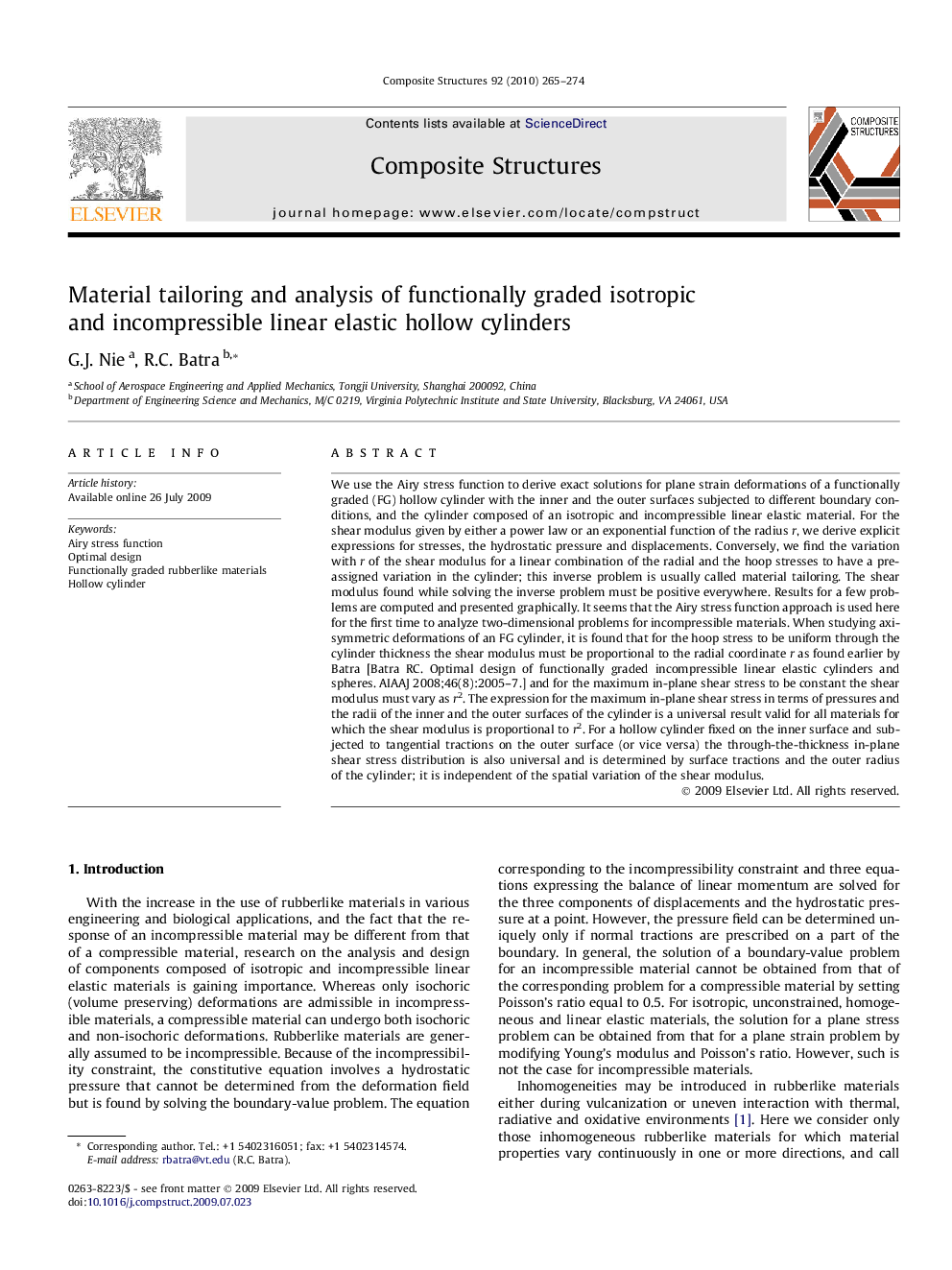| کد مقاله | کد نشریه | سال انتشار | مقاله انگلیسی | نسخه تمام متن |
|---|---|---|---|---|
| 253156 | 502988 | 2010 | 10 صفحه PDF | دانلود رایگان |

We use the Airy stress function to derive exact solutions for plane strain deformations of a functionally graded (FG) hollow cylinder with the inner and the outer surfaces subjected to different boundary conditions, and the cylinder composed of an isotropic and incompressible linear elastic material. For the shear modulus given by either a power law or an exponential function of the radius r, we derive explicit expressions for stresses, the hydrostatic pressure and displacements. Conversely, we find the variation with r of the shear modulus for a linear combination of the radial and the hoop stresses to have a pre-assigned variation in the cylinder; this inverse problem is usually called material tailoring. The shear modulus found while solving the inverse problem must be positive everywhere. Results for a few problems are computed and presented graphically. It seems that the Airy stress function approach is used here for the first time to analyze two-dimensional problems for incompressible materials. When studying axisymmetric deformations of an FG cylinder, it is found that for the hoop stress to be uniform through the cylinder thickness the shear modulus must be proportional to the radial coordinate r as found earlier by Batra [Batra RC. Optimal design of functionally graded incompressible linear elastic cylinders and spheres. AIAAJ 2008;46(8):2005–7.] and for the maximum in-plane shear stress to be constant the shear modulus must vary as r2. The expression for the maximum in-plane shear stress in terms of pressures and the radii of the inner and the outer surfaces of the cylinder is a universal result valid for all materials for which the shear modulus is proportional to r2. For a hollow cylinder fixed on the inner surface and subjected to tangential tractions on the outer surface (or vice versa) the through-the-thickness in-plane shear stress distribution is also universal and is determined by surface tractions and the outer radius of the cylinder; it is independent of the spatial variation of the shear modulus.
Journal: Composite Structures - Volume 92, Issue 2, January 2010, Pages 265–274